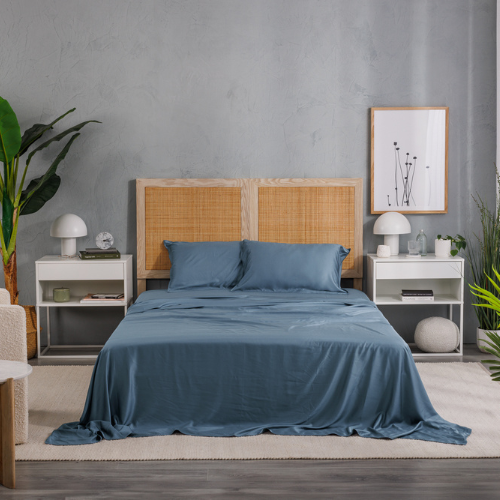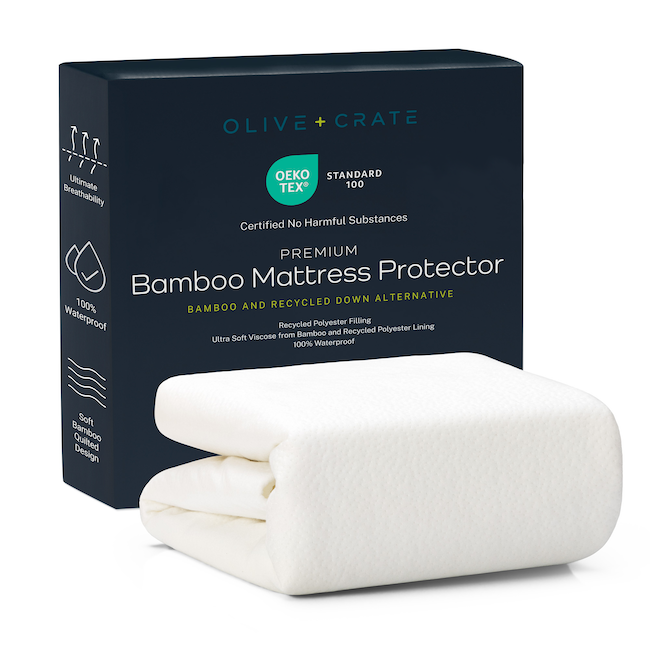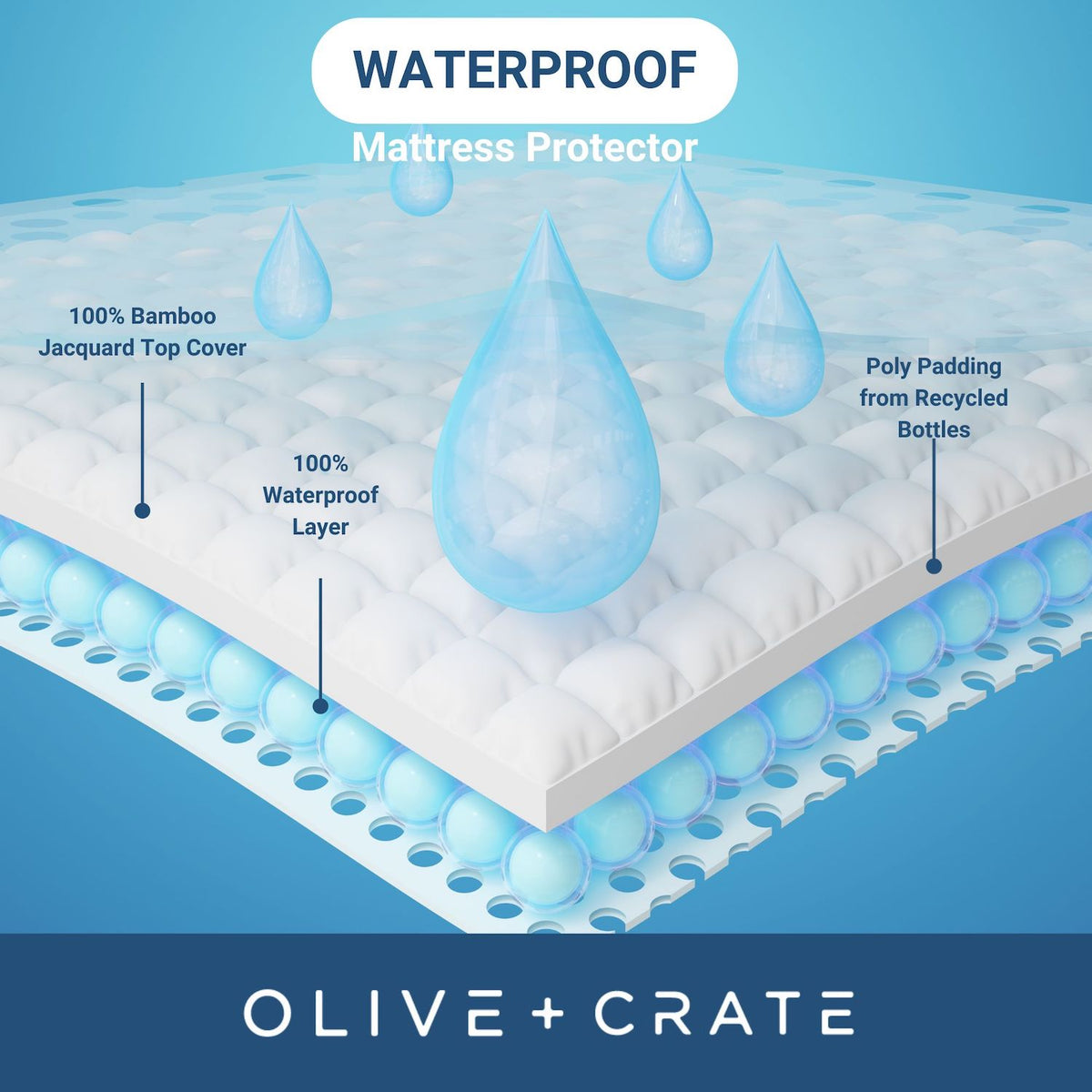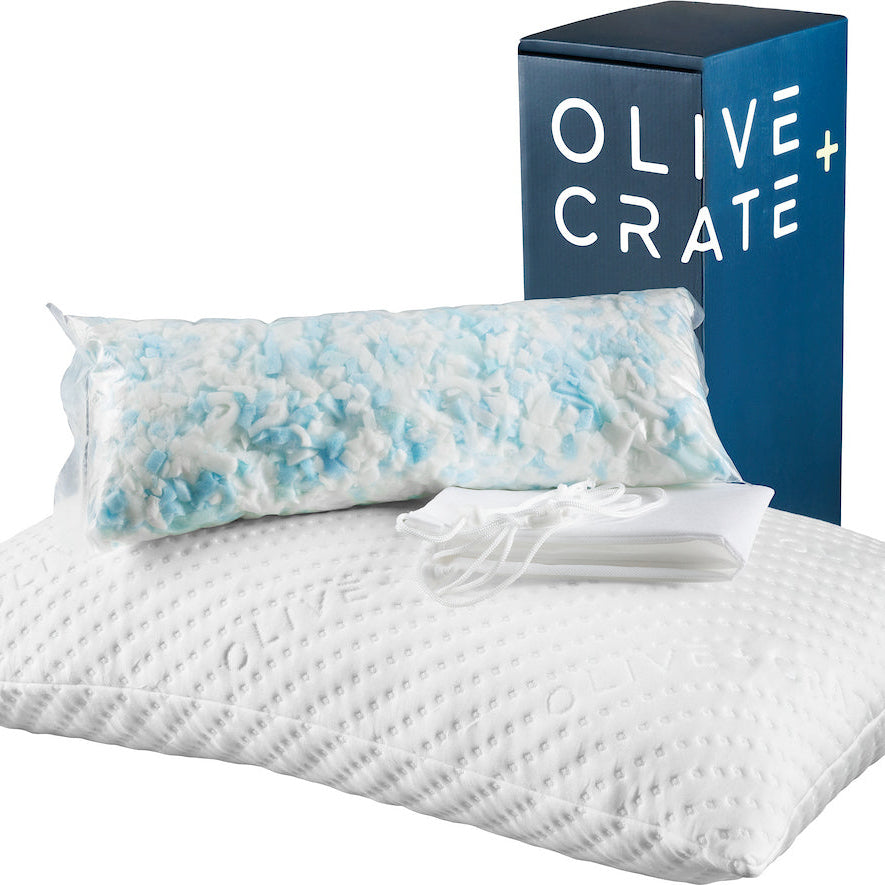Understanding How Your Bedding Affects Sensitive Skin
Your skin, especially if it's sensitive, interacts constantly with its environment. This includes your bedding, which you spend about a third of your life touching. Choosing the wrong bedding can contribute to various skin problems, from minor irritation to serious allergic reactions. For instance, synthetic fabrics can trap heat and moisture, creating an ideal environment for bacteria and worsening conditions like eczema. This can disrupt sleep, leaving you waking up itchy and irritated. Choosing gentle sheets for delicate skin is vitally important.
Common Skin Reactions Triggered by Bedding
Many people don't realize their bedding might be causing their skin reactions. These reactions can include:
- Rashes: These often appear as red, bumpy, or itchy patches, triggered by allergens or irritants in your bedding.
- Itching: Itching at night can be incredibly disruptive to sleep. It's often a sign of an allergic reaction or irritation.
- Dryness: Some fabrics can strip your skin of its natural oils, causing dryness and flakiness, especially if your skin is already dry or sensitive.
- Acne: Bedding that traps oil and sweat can contribute to breakouts, especially on your face and back.
These reactions can be caused by several bedding-related factors. Understanding these factors, from the fabric type to the manufacturing process, is crucial for making informed choices about your sheets.
The Rise of Sensitive Skin-Friendly Products
The growing demand for sensitive skin-friendly bedding reflects a larger skincare market trend. The global sensitive skincare market saw significant growth, from $44.36 billion in 2024 to a projected $48.42 billion in 2025, a CAGR of 9.1%. This increase highlights the growing awareness of skin sensitivities and the need for products that address these concerns. For more detailed information, see this report: Learn more about the sensitive skincare market
Choosing the right bedding is a key step in managing sensitive skin. Let's explore the materials that can truly promote healthy, comfortable sleep.
Best Sheets For Sensitive Skin: Materials That Actually Make A Difference
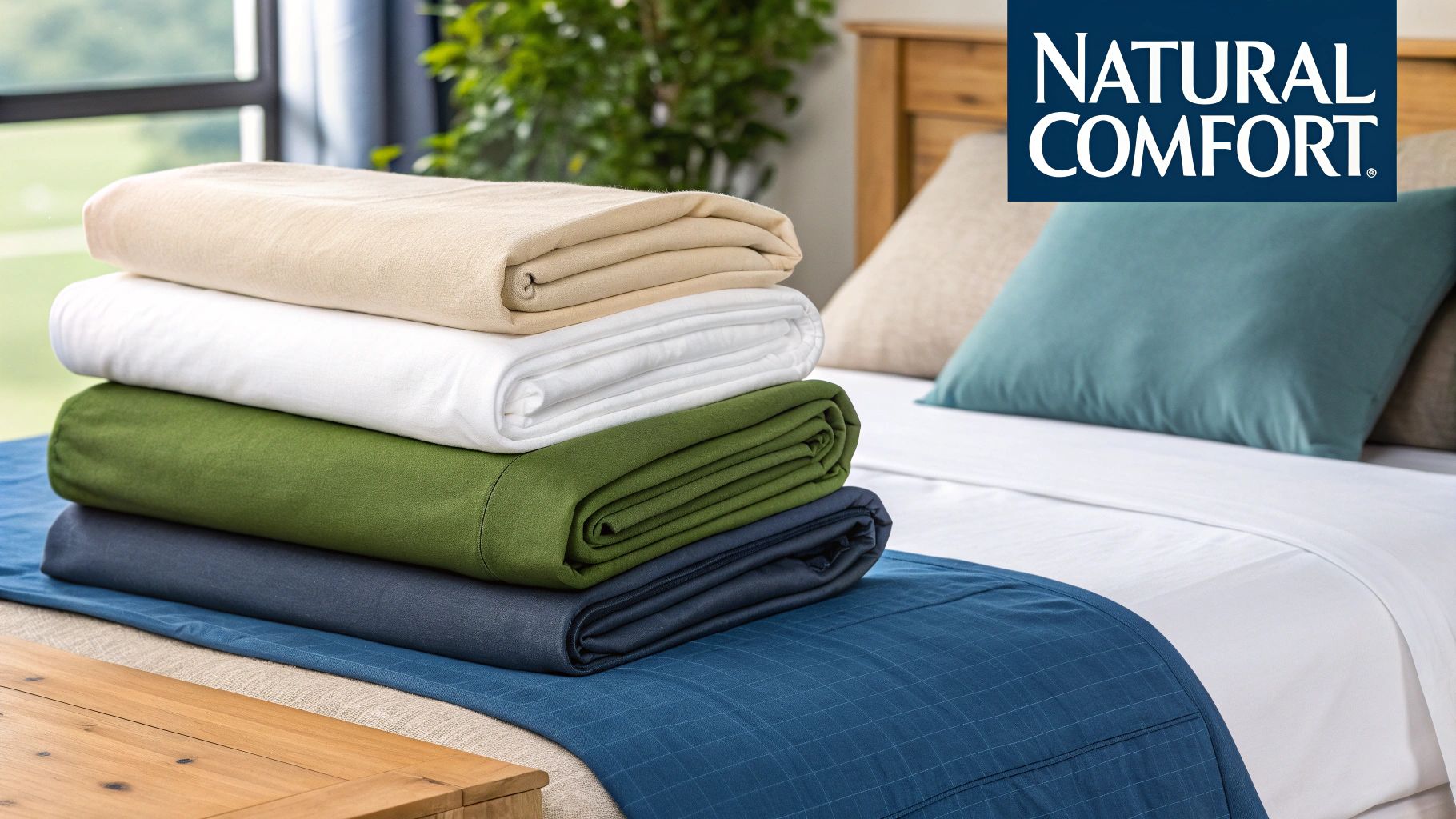
Finding the perfect sheets for sensitive skin starts with understanding the materials. It's a common misconception that all "natural" fabrics are ideal. Surprisingly, some synthetics can be incredibly beneficial. This makes carefully considering fabric properties key for a comfortable, irritation-free night's sleep.
Natural Fabrics: Exploring The Benefits
Organic cotton is a popular choice, and for good reason. Its breathability allows for excellent air circulation, preventing overheating and wicking away moisture. This helps keep your skin dry, reducing the risk of irritation. The organic certification also guarantees no harmful pesticides or chemicals.
Bamboo is another excellent option, known for its natural antimicrobial properties. These properties help inhibit bacterial growth, a significant benefit for those with skin infections or allergies. Beyond its practical benefits, bamboo also offers a luxuriously soft, silky texture.
Linen provides a luxurious feel and remarkable breathability, making it a sought-after choice for sensitive skin. Linen bedding excels at wicking away moisture, creating a dry and comfortable sleep environment. This growing trend toward moisture-wicking materials highlights the importance of choosing bedding that supports skin health. Discover more insights about the bedding market.
Synthetic Fabrics: Unexpected Advantages
While natural fabrics often dominate the conversation, some synthetic materials offer unique benefits for sensitive skin. Microfiber, for example, is incredibly soft and often more budget-friendly than natural alternatives. However, its tight weave can sometimes trap heat.
Tencel, derived from sustainably harvested wood pulp, offers the best of both worlds. It combines the softness of natural fibers with the durability of synthetics. Tencel is also highly absorbent and breathable, making it ideal for sensitive skin. Learn more in our article about the benefits of eucalyptus sheets for sensitive skin.
Weave and Thread Count: More Than Just Numbers
Beyond the material itself, the weave and thread count significantly impact comfort. A percale weave is known for its crisp, cool feel, while a sateen weave offers a smoother, more luxurious texture.
While high thread counts are often associated with luxury, they aren't always the best for sensitive skin. A thread count between 200 and 400 often strikes the ideal balance of softness, breathability, and durability.
Choosing the right sheet materials is the first step towards a truly comfortable, skin-friendly sleep sanctuary. You might be interested in: comparing bamboo vs. cotton vs. eucalyptus sheets. By understanding the properties of various fabrics and weaves, you can make informed choices that prioritize your skin's health and ensure a restful night's sleep.
Beyond Fabric: Features That Prevent Irritation
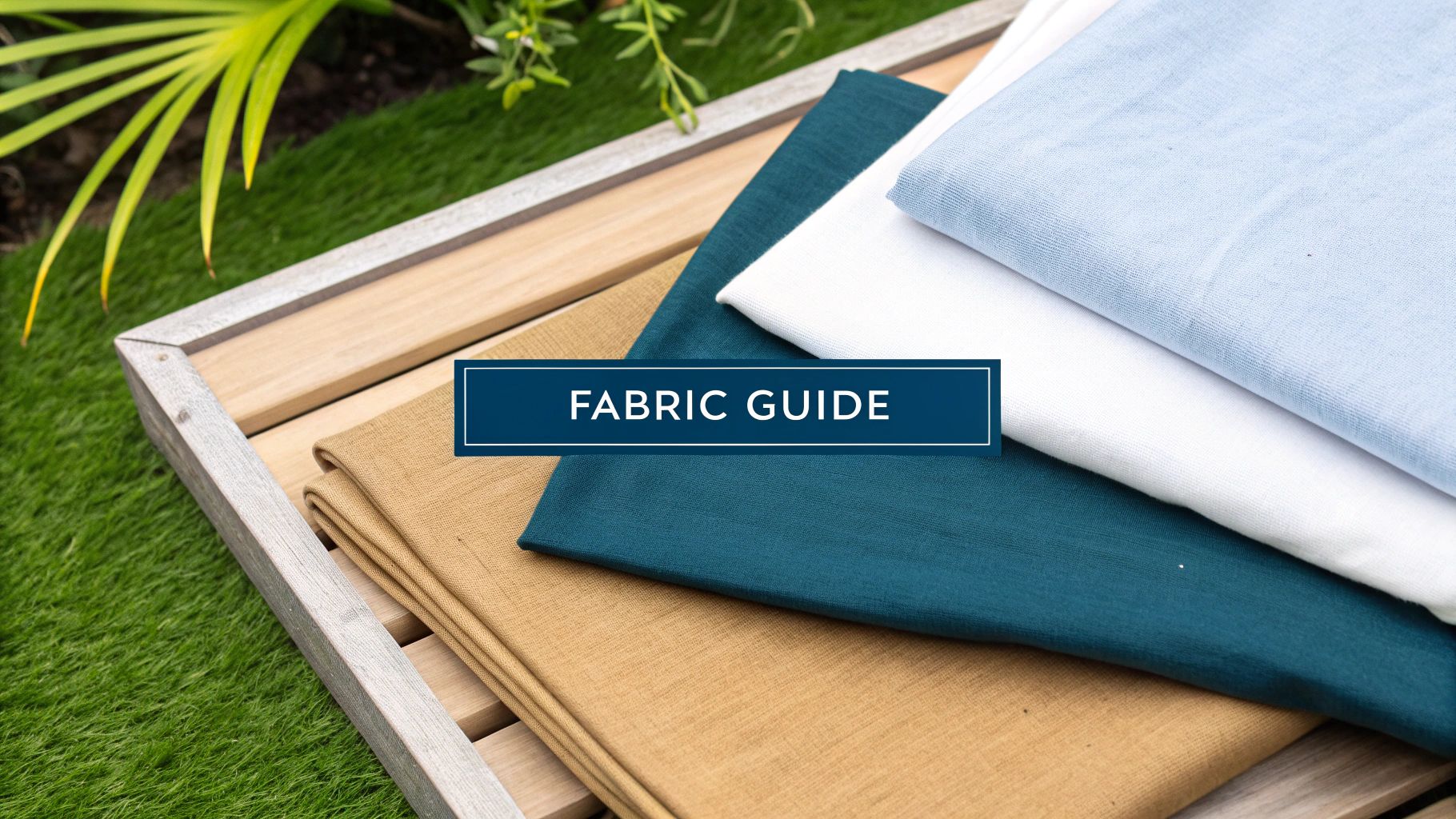
Finding the perfect sheets for sensitive skin involves more than just considering the material. Small details, like seams and how the sheets are finished, can significantly affect your comfort. This means understanding certifications and how specific features contribute to a skin-friendly sleep.
Certifications: Decoding The Labels
Look for certifications like OEKO-TEX Standard 100 and GOTS (Global Organic Textile Standard). OEKO-TEX ensures the absence of harmful substances, while GOTS verifies organic practices throughout production. These certifications provide reassurance that your sheets are truly safe. For instance, OEKO-TEX analyzes fabrics for over 300 harmful substances, meeting strict safety requirements.
Construction Details: Small Changes, Big Impact
Seamless construction minimizes friction, reducing irritation, especially for those prone to chafing or eczema. Tagless designs eliminate another potential irritant, particularly for those with tactile sensitivities. Reinforced edges increase durability and prevent fraying, which can cause rough patches against sensitive skin.
Chemical-Free Processing: Avoiding Hidden Irritants
Sheets treated with harsh dyes or formaldehyde-based finishes can cause skin reactions. Chemical-free processing is essential for sensitive skin, keeping bedding free of potential irritants. This is particularly important for those with allergies or eczema.
Maintaining Hypoallergenic Properties: Long-Term Care
Even the best sheets require proper care. Using gentle detergents and avoiding harsh chemicals preserves their hypoallergenic properties. Check out this helpful comparison: comparing bamboo vs. cotton vs. eucalyptus sheets. Washing in cool or warm water helps maintain fiber integrity and prevents shrinkage. Proper drying and storage also contribute to lasting comfort and prevent allergen buildup. Avoid excessive detergent or fabric softener, as these can leave irritating residues. These steps will ensure your sheets remain a haven for comfortable sleep.
pH Balance: The Importance of Neutral Bedding
A neutral pH is crucial for healthy skin, reducing irritation and dryness. Sheets with a balanced pH support skin health and are less likely to trigger reactions. Using detergents designed for sensitive skin helps maintain this balance. This keeps sheets gentle and skin-friendly, promoting restful, irritation-free sleep. Understanding these factors helps create a sleep environment that benefits your skin and overall well-being.
Curated Recommendations for Every Skin Type
Finding the perfect sheets for sensitive skin can feel like searching for a needle in a haystack. This guide offers advice tailored to your specific skin concerns, helping you navigate the overwhelming world of bedding and prioritize your needs. Whether eczema, allergies, or general sensitivity keeps you up at night, understanding the benefits of different materials and features is key to a comfortable slumber.
Navigating the Options for Different Skin Needs
Different skin types require different approaches. Here's a breakdown of materials and features to consider based on your specific sensitivity:
-
Eczema: If you're prone to eczema flare-ups, cooling, breathable fabrics like organic cotton or Tencel are your best bet. These materials minimize overheating and moisture buildup, two common eczema triggers. Look for smooth, tightly woven fabrics to reduce friction against irritated skin.
-
Allergies: For allergy sufferers, hypoallergenic materials like bamboo or Tencel offer natural resistance to dust mites and other allergens. Prioritize bedding certified with the OEKO-TEX Standard 100. This certification guarantees your sheets are free from harmful chemicals that could trigger reactions.
-
General Sensitivity: If you experience general skin sensitivity, opt for ultra-soft materials like organic cotton or microfiber with a smooth weave like sateen. Consider seamless construction and tagless designs to minimize irritation.
Balancing Budget and Quality
Finding the sweet spot between affordability and quality is entirely possible. While premium sheets often boast superior durability and performance, plenty of budget-friendly options effectively cater to sensitive skin. Microfiber, for instance, delivers exceptional softness at a lower price point.
Thread Count and Breathability: Finding the Right Balance
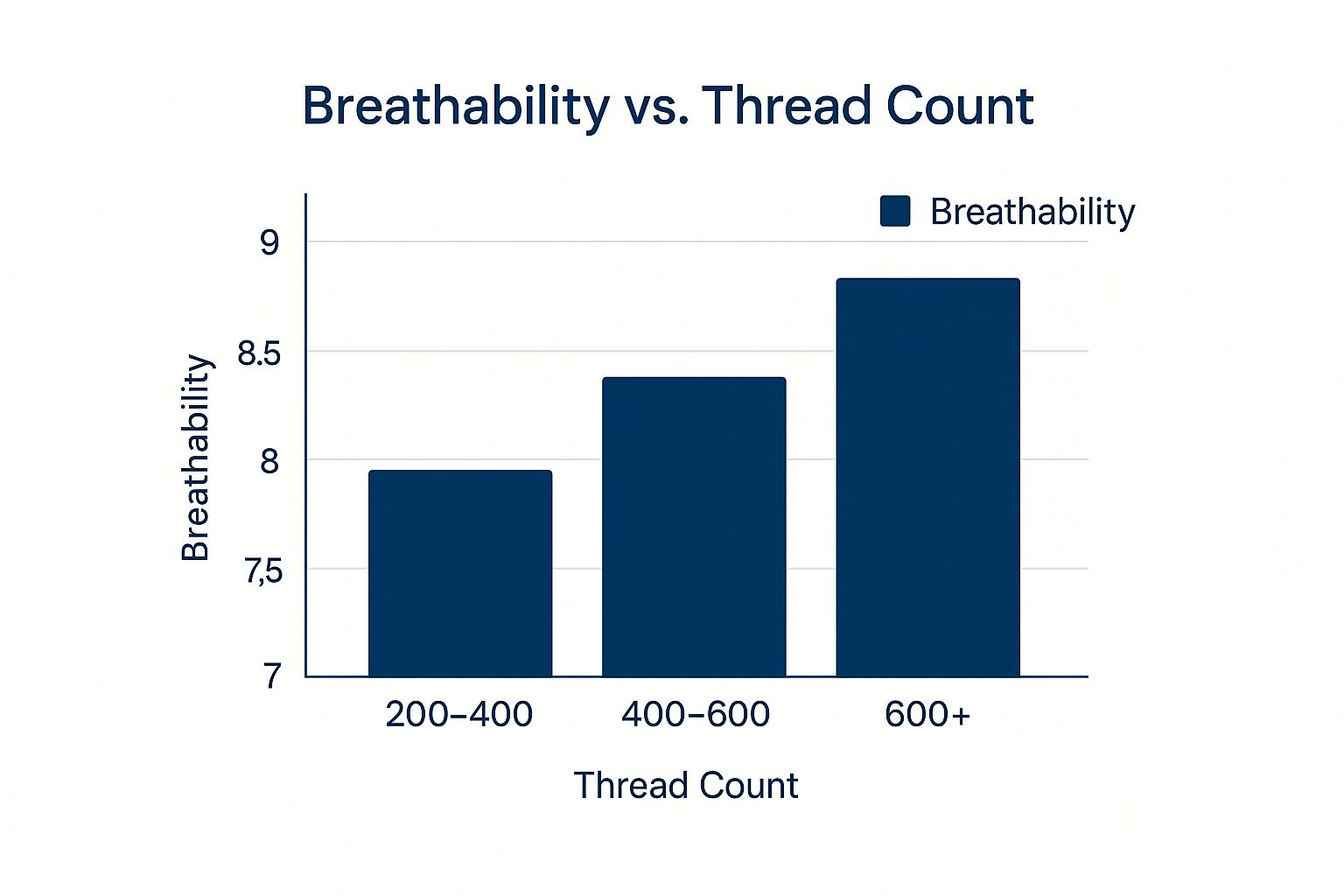
The infographic above illustrates the relationship between thread count and breathability. While a higher thread count (600+) offers excellent breathability, mid-range thread counts (400-600) provide a strong balance of breathability and softness. This means that for sensitive skin, fixating on high thread counts isn't necessary. A mid-range option can offer significant comfort and breathability benefits.
To further help you choose the right sheets, we've compiled a comparison table:
Best Sheets Comparison for Different Sensitive Skin Types: Comparison of top-rated sheet materials and brands based on skin sensitivity type, comfort features, and price ranges.
| Material Type | Best For | Key Benefits | Price Range | Top Brand |
|---|---|---|---|---|
| Organic Cotton | Eczema, General Sensitivity | Breathable, soft, durable | $$ - $$$ | Boll & Branch |
| Tencel | Eczema, Allergies | Cooling, moisture-wicking, hypoallergenic | $$-$$$ | Olive + Crate |
| Bamboo | Allergies | Soft, hypoallergenic, eco-friendly | $$ - $$$ | Bamtek |
| Microfiber | General Sensitivity | Soft, affordable, easy-care | $ - $$ | Mellanni |
This table highlights the key differences and similarities between popular sheet materials, helping you make an informed decision.
Brand Spotlight: Olive + Crate
Olive + Crate specializes in TENCEL™ eucalyptus fiber bedding. This eco-friendly and naturally cooling option is perfect for sensitive skin. Their sheets are breathable, gentle, and ideal for hot sleepers. Olive + Crate is an excellent choice for anyone prioritizing both skin health and sustainability.
Considering Seasonal Changes
Remember, skin sensitivity can fluctuate with the seasons. Having different sheet sets for warmer and cooler months can dramatically improve comfort. Lighter, more breathable fabrics like linen are ideal for summer, while slightly heavier options like organic cotton flannel provide cozy warmth in winter. Pay attention to how your skin reacts to different textures and adjust your bedding accordingly.
By considering these factors and exploring the recommendations provided, you can create a sleep sanctuary that supports your skin’s health and promotes restful sleep. Making informed choices is the first step towards achieving lasting comfort and relief from skin sensitivities.
Shopping Smart: Avoiding Common Pitfalls
Finding the perfect sheets for sensitive skin can feel like navigating a minefield. The bedding market overflows with products promising all sorts of benefits, making it difficult to separate true quality from clever marketing. Developing a discerning eye is key to making informed decisions that truly benefit your skin.
Decoding Marketing Hype: Spotting Red Flags
Vague "hypoallergenic" claims, without certifications like OEKO-TEX Standard 100 or GOTS, are a definite red flag. These certifications guarantee the absence of harmful substances. Suspiciously low prices might also indicate harsh chemical processing, which can irritate sensitive skin. Beware of deals that seem too good to be true; they often compromise your skin's health.
Customer reviews are a powerful tool. They can reveal patterns of skin reactions or other issues, providing valuable insights that go beyond marketing claims.
The Power of Research: Utilizing Reviews and Return Policies
Customer reviews offer invaluable real-world perspectives. Look for mentions of skin reactions, comfort levels, and durability. For example, someone with eczema might share how a specific sheet set reduced their nighttime itching.
A solid return policy is a must-have when purchasing bedding for sensitive skin. A trial period lets you experience the sheets firsthand and ensure they truly meet your needs. This is especially important because skin reactions can be so unpredictable.
Timing Your Purchase: Smart Shopping Strategies
Strategic timing can save you money. Sales events like Black Friday and holiday promotions often offer significant discounts on quality bedding. However, don't sacrifice quality for a lower price.
Sign up for email alerts from trusted brands like Olive + Crate to stay informed about sales and special offers. The expanding bedding market offers more and more choices for those with sensitive skin.
The U.S. bedding market, valued at USD 28.0 billion in 2023, is projected to hit USD 45.26 billion by 2032, growing at a CAGR of 7.1%. This growth reflects the increasing consumer demand for comfortable, high-quality bedding, including options for sensitive skin. Find more detailed statistics here.
Gentle Sheets For Delicate Skin: Building a Complete Bedding Collection
A truly skin-friendly sleep environment goes beyond just sheets. Consider pillowcases, mattress protectors, and blankets made from similar hypoallergenic materials. This comprehensive approach minimizes exposure to irritants and maximizes comfort.
Think of it as creating a sanctuary for your skin, where each element promotes restful, irritation-free sleep. By focusing on quality, certifications, and customer feedback, you can confidently navigate the bedding market and find sheets that truly support healthy sleep.
Caring for Your Investment: Maintenance That Matters

Investing in high-quality sheets is a game-changer for sensitive skin, paving the way for better sleep and healthier skin. But just buying them isn't enough. Maintaining their quality requires a consistent and thoughtful approach. This means understanding the best ways to wash, dry, and store your sheets to preserve their skin-friendly properties.
Gentle Washing: Preserving Fabric Integrity
Washing your sheets correctly is the cornerstone of their longevity and gentleness on sensitive skin. It all starts with understanding the impact of water temperature, detergent choices, and wash cycles. Hot water, for instance, can damage delicate fibers, reducing softness and potentially releasing unwanted chemicals from lower-quality sheets.
Always opt for cold or lukewarm water to maintain the fabric's integrity. This simple step goes a long way in preserving the quality of your sheets.
Gentle detergents, free of dyes and fragrances, are essential. Many common detergents contain harsh chemicals that can irritate sensitive skin, negating the benefits of your carefully selected sheets. Natural alternatives, like soap nuts or baking soda, provide a truly hypoallergenic wash.
Finally, select a gentle or delicate wash cycle. This minimizes friction, extending the life of your sheets. Avoid overloading the washing machine, which can prevent thorough cleaning and contribute to premature wear and tear.
Proper Drying: Maintaining Softness and Preventing Allergens
Proper drying techniques further safeguard your investment and the hypoallergenic qualities of your sheets. Air drying is the gentlest approach, preserving fibers and preventing shrinkage. If you must machine dry, use a low heat setting and remove sheets promptly to avoid wrinkles and heat damage.
Over-drying can make the fabric rough and potentially irritating. It's essential to ensure good ventilation during drying to prevent allergens like dust mites, which flourish in damp environments.
Storage Techniques: Preserving Freshness
Proper storage keeps your sheets fresh between uses. Store them in a cool, dry, and well-ventilated space, away from direct sunlight and moisture. Avoid plastic bags, which can trap moisture and lead to mildew.
Folding them neatly and storing them flat or loosely rolled helps prevent wrinkles, maintaining that smooth, comfortable texture. A lavender sachet added to your linen closet provides a naturally fresh scent.
To help summarize the care instructions, the table below offers a quick guide to maintaining your sheets:
Sensitive Skin Sheet Care Guide Step-by-step care instructions, recommended products, and maintenance schedules for different sheet materials
| Care Step | Frequency | Products to Use | Products to Avoid | Special Notes |
|---|---|---|---|---|
| Washing | Weekly | Gentle, fragrance-free detergent, soap nuts, baking soda | Harsh chemicals, dyes, perfumes | Use cold or lukewarm water, gentle cycle |
| Drying | After each wash | N/A | High heat, fabric softener | Air dry or tumble dry low, ensure proper ventilation |
| Storage | Between uses | Lavender sachet (optional) | Plastic bags | Store in a cool, dry, well-ventilated area |
This table outlines the key steps to maintain the quality and longevity of your sheets, ultimately contributing to better sleep and healthier skin.
Troubleshooting and Replacement Guidelines
Even with the best care, sheets eventually show their age. Signs of wear and tear, like thinning fabric, pilling, or lingering odors, indicate it’s time for new ones. For optimal skin health and sleep, replace your sheets every one to two years, or sooner if needed.
By addressing common care mistakes and creating a consistent maintenance routine, you can ensure your sheets remain a haven for comfortable, irritation-free sleep.
Building Your Complete Sleep Sanctuary
Transforming your bedroom into a true haven for sensitive skin involves more than just selecting the right sheets. It's about cultivating a sleep environment that minimizes irritants and maximizes comfort. This means considering everything from your pillowcases and mattress protector to the overall air quality of your room.
Coordinating Your Bedding for Maximum Skin Benefits
Think of your bedding as a layered system designed to protect and soothe. Start with a hypoallergenic mattress protector to create a barrier against dust mites and allergens. Then, select pillowcases made from the same material as your sheets for consistent comfort and reduced irritation.
When choosing blankets, opt for breathable, natural fibers such as organic cotton or bamboo. These materials promote air circulation, which prevents overheating and moisture buildup that can aggravate sensitive skin. For those with eczema or allergies, a dust mite-proof cover for your duvet or comforter offers an added layer of protection.
Learn more in our article about tips for creating a relaxing and sustainable bedroom space.
Environmental Factors: Creating an Oasis for Sensitive Skin
Managing your bedroom's environment is crucial for sensitive skin. Humidity control helps prevent dust mites, while air purification reduces airborne allergens. Using a humidifier or dehumidifier can help maintain optimal humidity levels, generally between 30% and 50%.
Regular cleaning, including dusting and vacuuming, minimizes allergens and irritants. This creates a cleaner, healthier sleep space, free from triggers that can lead to skin reactions.
Addressing Real-World Challenges: Partners, Seasons, and Severe Sensitivities
Sharing a bed can present unique challenges. If your partner prefers different bedding materials, consider using separate blankets or even separate sets of sheets. This ensures individual comfort and caters to specific skin needs.
Adapting to seasonal changes is also important. Lighter fabrics like linen are ideal for summer, while heavier options like organic cotton flannel provide warmth in winter. Having dedicated sheet sets for each season enhances comfort and minimizes potential skin reactions.
For individuals with severe sensitivities, creating a hypoallergenic sleep sanctuary might require additional measures. This could include using special laundry detergents, avoiding certain cleaning products in the bedroom, or consulting with an allergist to pinpoint specific triggers.
Maintaining Your Sleep Sanctuary: Tips for Long-Term Comfort
Maintaining a skin-friendly sleep environment requires consistent effort. Wash bedding regularly according to the manufacturer’s instructions, using gentle, fragrance-free detergents. This helps remove allergens, dust mites, and other irritants.
Proper storage is also essential. Store bedding in a cool, dry place, away from direct sunlight. Breathable storage bags or containers made from natural materials are ideal.
By addressing these environmental factors and implementing these practical tips, you can create a bedroom that truly supports your sensitive skin and promotes restful, restorative sleep.
Ready to experience the ultimate in sleep comfort and skin wellness? Explore the luxurious and hypoallergenic world of TENCEL™ eucalyptus fiber bedding at Olive + Crate. Our sheets are designed to soothe sensitive skin, regulate temperature, and provide lasting comfort for a truly rejuvenating sleep experience.


